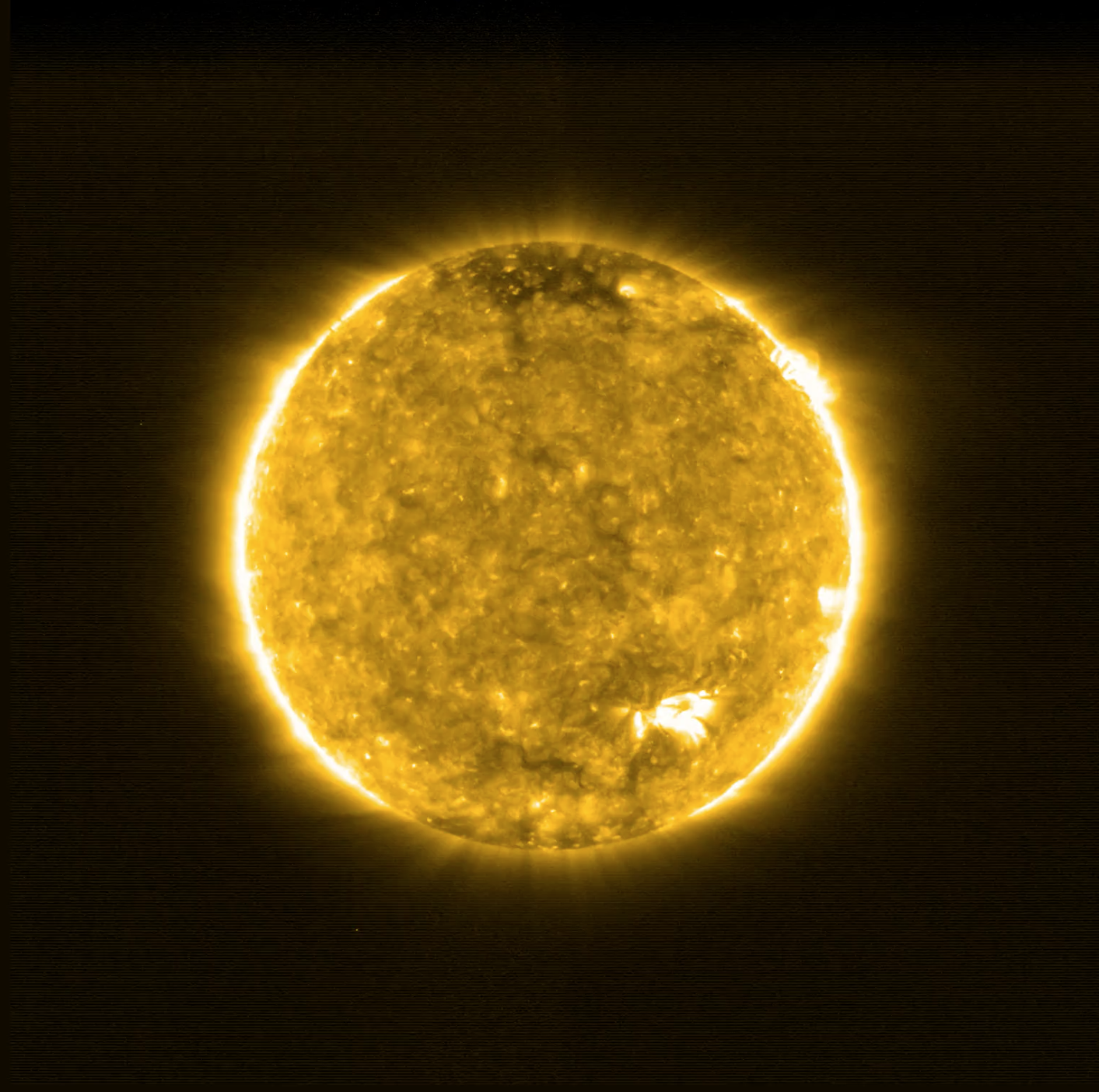Weird country-size 'campfires' on the sun revealed in closest-ever photos
It took just one round of photographs from a new solar science spacecraft for scientists to learn something new about the sun.
Solar Orbiter, a joint project of NASA and the European Space Agency (ESA), launched in February to give humans an entirely new view of the sun we see every day of our lives. And it's quite literally a new view: the spacecraft is equipped with telescopes and will end its mission closer to the sun than any probe carrying such instruments has before.
Even with just the mission's first images, scientists have already identified a stunning new phenomenon they're calling "campfires."
"We've never been closer to the sun with a camera, and this is just the beginning of the long, epic journey of Solar Orbiter," Daniel Müller, ESA's Solar Orbiter project scientist, said during a news conference held Thursday (July 16).
Related: Solar Orbiter: The US-European mission to explore the sun's poles in photos
After its launch, Solar Orbiter endured a minor hiccup: ESA briefly paused the spacecraft's commissioning process when the coronavirus pandemic limited the agency's support capacity. But the break didn't last long before commissioning resumed in preparation for the spacecraft's first loop around the sun.
Between the coronavirus and some instrument snags right before launch, the team had set their expectations for the first images low.
Breaking space news, the latest updates on rocket launches, skywatching events and more!
"To be honest, I didn't dare to expect anything," David Berghmans, a space physicist at the Royal Observatory of Belgium, and principal investigator of one of the instruments onboard Solar Orbiter, said during the news conference.
And it's that first close approach, or perihelion, that produced the newly released images on June 15. The maneuver brought the spacecraft within 48 million miles (77 million kilometers) of the sun; that's about half the distance at which Earth orbits. By the end of the mission, Solar Orbiter will again halve that distance.
But even these first images, it turned out, were full of tantalizing sights.
"It's amazing in the smallest details how much stuff is going on there," Berghmans said. "We couldn't believe it when we first saw this and we started giving it crazy names like campfires and dark fibrils and ghosts and whatever we saw. There is so much new small phenomena going on on the smallest scale."
Related: World's largest solar telescope produces never-before-seen image of our star
'Campfires' on the sun
Mission scientists are particularly excited because they identified an entirely new feature in the images, thanks to their fine detail. These structures are tiny (well, tiny relative to the sun, anyway) bursts that the researchers have nicknamed "campfires." The smallest of those campfires are about the size of a European country, according to Berghmans.
"The campfires are little relatives of the solar flares that we can observe from Earth, million or billion times smaller," Berghmans said in an ESA statement. "The sun might look quiet at the first glance, but when we look in detail, we can see those miniature flares everywhere we look."
Solar Orbiter scientists aren't sure yet whether these campfires truly are miniature versions of the solar flares scientists have studied for decades or whether they work differently from their more dramatic counterparts. "It's too early to draw any scientific conclusions," Müller said.
But the researchers do hope that further studying these campfires will help scientists solve one of the key mysteries of the sun: why its outer atmosphere, called the corona, is so much hotter than its visible surface.
Whereas the visible surface of the sun is about 99,000 degrees Fahrenheit (55,000 degrees Celsius), the wispy corona is a sweltering million degrees under any system of measurement. That's been a longstanding puzzle for scientists, since logically, it should be cooler farther away from the fusion furnace inside the sun, and it's one of the puzzles that new missions like Solar Orbiter and NASA's Parker Solar Probe were designed to try to tackle.
The Parker Solar Probe, incidentally, will fly much closer to the sun than Solar Orbiter does, but it does not carry telescopic equipment, only instruments that measure its immediate environment. Solar Orbiter carries both types of instruments.
And the scientists on Solar Orbiter are confident that these first images are just the beginning of the discoveries the mission will enable.
"You have to remember that the current data that we are showing today are merely byproducts of technical tests that we were doing, in these images the instruments are not fully configured yet," Berghmans said.
Moreover, the sun is currently at the quietest point of its 11-year activity cycle, so Solar Orbiter should have much more energetic phenomena to study as the mission progresses.
Related: What's inside the sun? A star tour from the inside out
Closer sun photos to come
The Solar Orbiter spacecraft, which cost a total of $1.5 billion spread between several entities, is continuing its cruise toward the sun. During the cruise, the spacecraft's local instruments will be working continuously, while the telescopic imagers turn on and off depending on opportunities. Then, in November 2021, the science will begin in earnest.
First, it will gradually loop closer to the sun over the course of a few years, aided by swings past Venus to send it closer to its target. Then, in 2025, the spacecraft will leave the main plane of the solar system and begin following a tilted orbit that allows it to image the sun's poles, which have never been seen in such detail.
But while future images hold even more scientific perspective, there's still something special about the first images from the mission, the scientists said.
"The night we launched, it struck me that Solar Orbiter will go and explore far-away parts of the solar system and … see the sun from a completely different perspective," Müller said. "It was really as if the spacecraft had sent us a postcard from its journey."
Email Meghan Bartels at mbartels@space.com or follow her on Twitter @meghanbartels. Follow us on Twitter @Spacedotcom and on Facebook.

Meghan is a senior writer at Space.com and has more than five years' experience as a science journalist based in New York City. She joined Space.com in July 2018, with previous writing published in outlets including Newsweek and Audubon. Meghan earned an MA in science journalism from New York University and a BA in classics from Georgetown University, and in her free time she enjoys reading and visiting museums. Follow her on Twitter at @meghanbartels.






